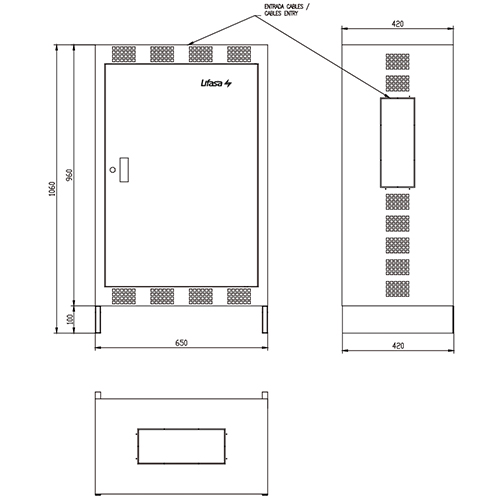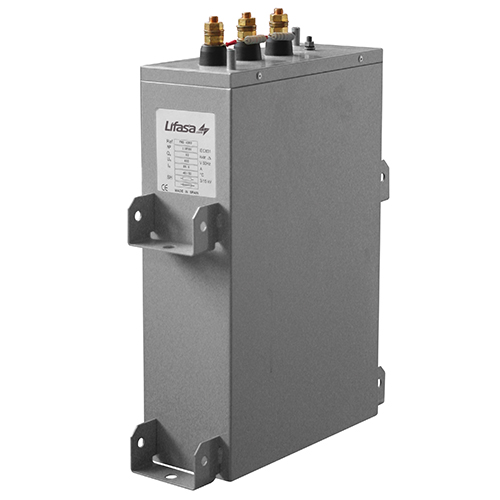Protection filters are used, in supply networks having a high level of harmonic distortion, when the final objective is reactive power compensation at the fundamental frequency.
Their purpose is to avoid that harmonic currents overload the capacitors by diverting them to the mains. Protection filters are made by connecting reactors in series with capacitors, in such a way that the tuning frequency of the whole unit is set at a value between the fundamental frequency and the frequency of the lowest present harmonic, which is usually the 5th order harmonic.
Connection of a reactor in series with a power capacitor, makes the capacitor to work at a voltage higher than the supply voltage. Because of this, capacitors to be connected to protection reactors, need to be designed to work at higher voltages than standard capacitors. The choice of the tuning point of the filter is a balance between the quantity of harmonics rejected by the filter and the voltage increase produced in the capacitor at the fundamental frequency.
It has to be also kept in mind that reactive power supplied by the filter at rated frequency (50 or 60 Hz), is different to the one that the capacitor would supply without the reactor.
Taking all the above into account, the reactor is normally chosen in such a way that its impedance is about 7% the impedance of the capacitor that protects. This will give a tuning frequency, for example at 50 Hz, of 189 Hz. Other tuning frequencies are also available.
Example
 The need for using protection filters for capacitors can be seen in the here below case (Fig. 4). Let us suppose that the converter current of the figure is 550 A, with the following harmonic distribution:
The need for using protection filters for capacitors can be seen in the here below case (Fig. 4). Let us suppose that the converter current of the figure is 550 A, with the following harmonic distribution:
I5 = 20% I1 = 110 A
I7 = 14% I1 = 77 A
I11 = 9% I1 = 50 A
I13 = 8% I1 = 44 A
he 150 kvar 400 V capacitor bank QC has a rated current of 217 A. The harmonic currents that will circulate through the capacitor can be calculated from the formula (3):
Ic5 = 37 A
Ic7 = 74 A
Ic11 = 288 A
Ic13 = 108 A
Then, the rms current the capacitor bank will absorb will be:
IC which is far above the 217 A marked on the rating plate of the capacitor bank. This overcurrent exceeds the safety limit set by IEC standards and makes impossible the connection of the bank without protection filters.


